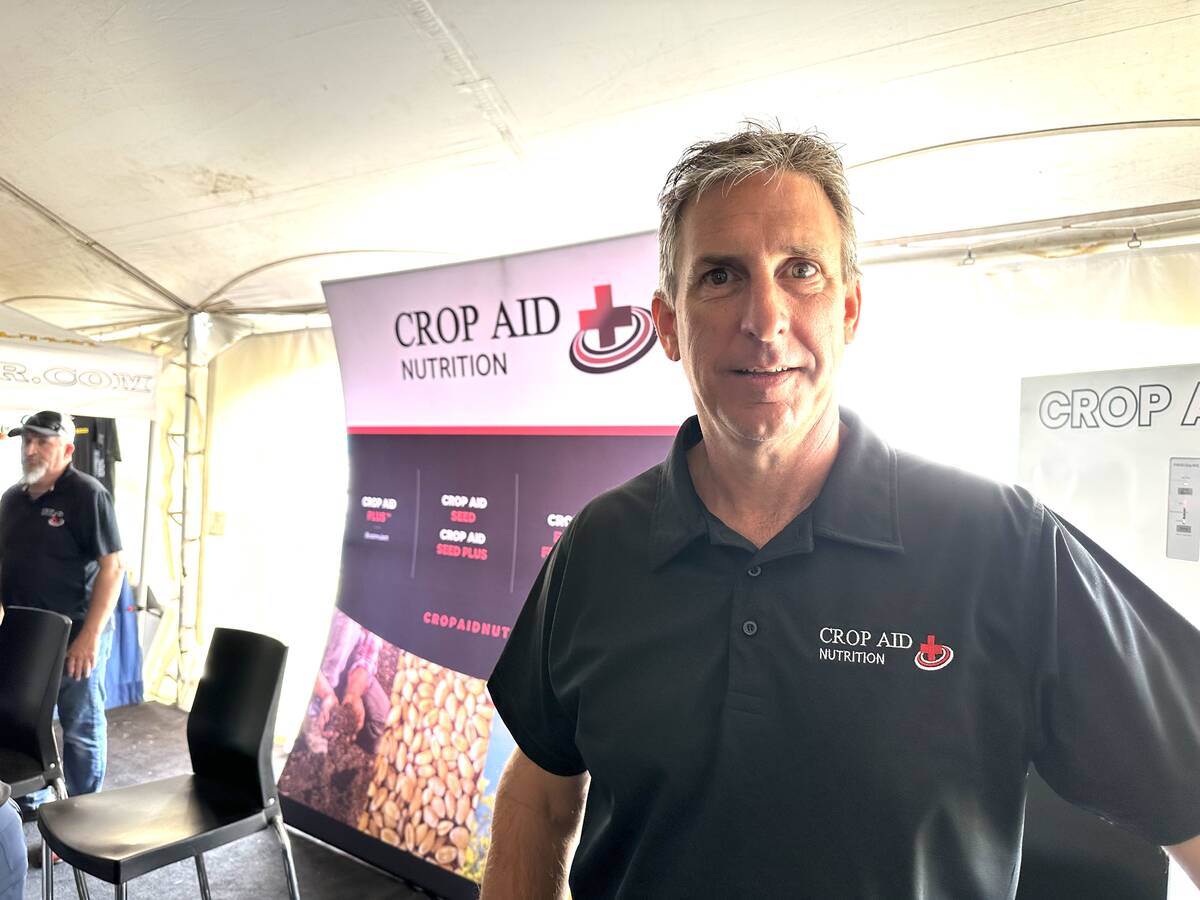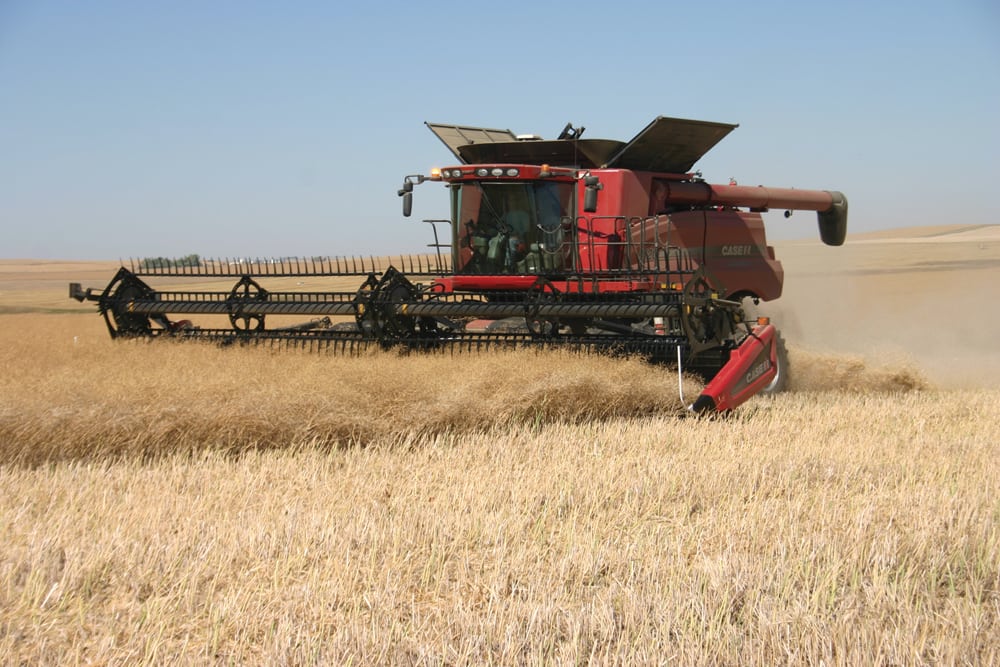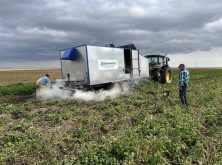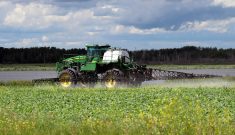Q: What should I know before I try straight cutting canola?
A: Many growers have successfully adopted this practice and it’s a viable alternative to swathing and combining.
As a standing canola crop reaches maturity the risk of pod shatter and/or pod drop is a key impediment to straight cutting. However, the introduction of varieties with pod shatter reduction traits has eased this concern. Growers attempting this practice for the first time should strongly consider selecting a pod shatter reduction variety. After that, growing the crop is no different up to the point of harvest management.
Read Also

New soil treatment targets saline patches in fields
Crop Aid SS is a Saskatchewan-made spray that’s intended to help farmers manage saline soils by leaching salts away from the root zone.
As the crop approaches maturity, terminating growth with a pre-harvest herbicide application is strongly recommended. Spraying is essentially the replacement for swathing. This will allow the crop to dry down uniformly. If the crop is not terminated, later maturing plants or patches will delay combining. The selection of the product used to terminate crop growth will depend on the herbicide-tolerant canola system. Glyphosate can be used in LibertyLink and Clearfield canola. Apply it at about the same time as swathing. Glyphosate works slowly and can take three to four weeks before combing. Desiccant-type products such as Heat or Reglone (Stage) are faster acting but provide minimal pre-harvest perennial weed management benefits. In the case of Roundup Ready canola the desiccant-type products are the only option.
When you’re assessing the crop for combining, the physical appearance of the plants is not always a good indicator of seed moisture content. In many cases, growers have found seed moisture content to be much less than expected based on plant colour change.
Norm Flore, P.Ag,CCA, is a manager of agronomic services with Nutrien Ag Solutions in southern Alberta.















